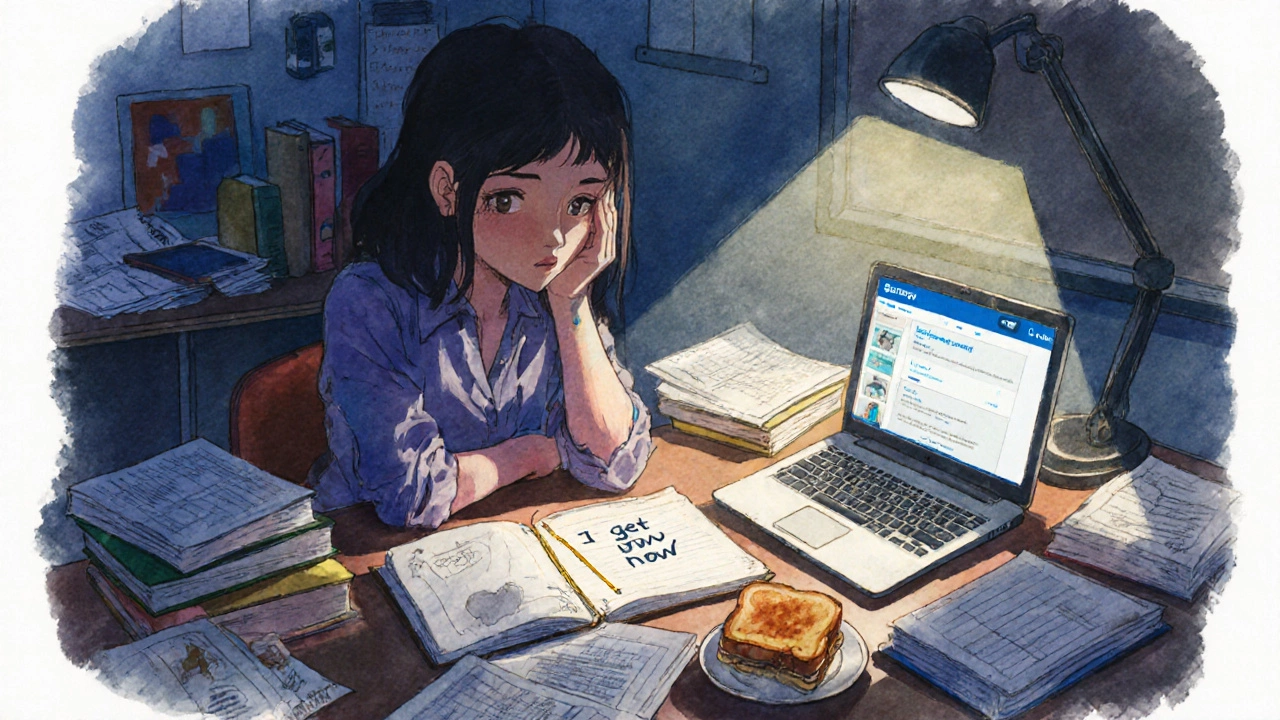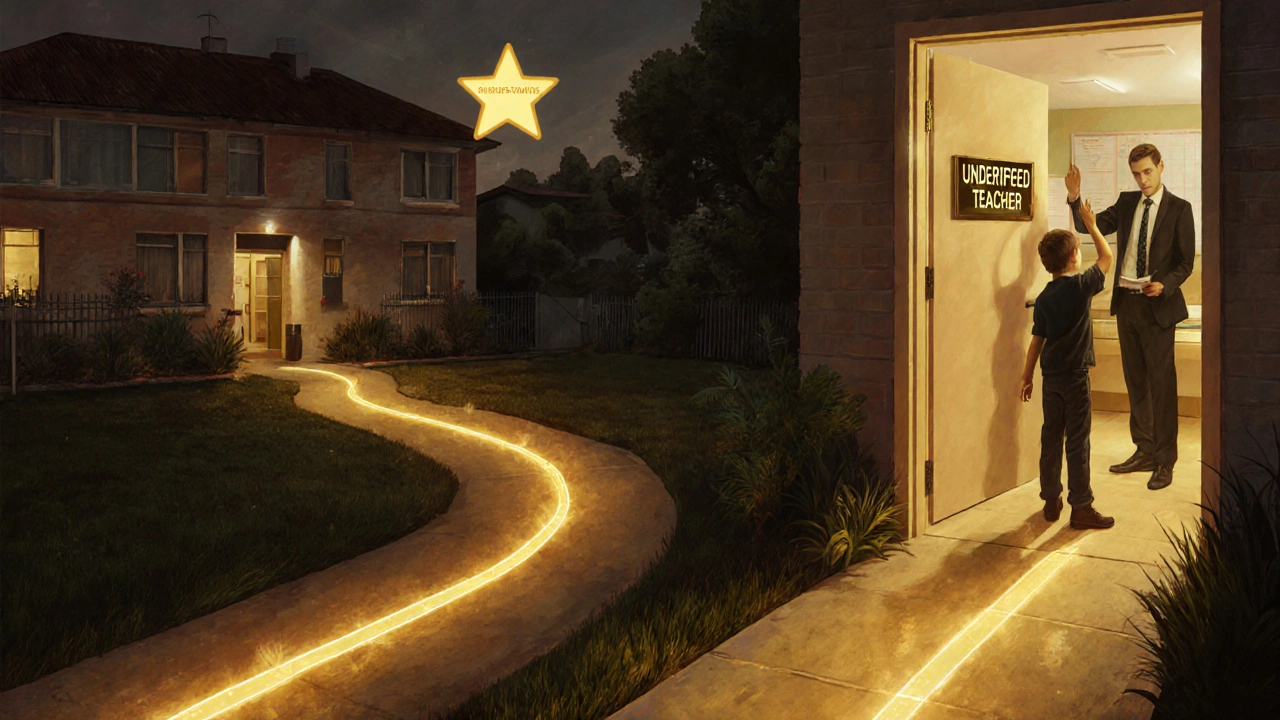Teacher Pathway Calculator
Find Your Teaching Path
Discover which teacher training pathway is right for you based on your current situation.
Ever wonder what it’s really like to become a teacher before you ever step into a classroom? A teacher in training isn’t just a student with a notebook - they’re someone actively learning how to teach, how to manage a room, how to explain fractions to a 10-year-old who just doesn’t get it, and how to handle a parent who thinks their child should be in gifted class. This isn’t theory. It’s hands-on, messy, exhausting, and sometimes life-changing work - all before the first official pay check.
Who Is a Teacher in Training?
A teacher in training, often called a pre-service teacher, is someone enrolled in a formal program to become a certified educator. This could be a university student in their final year of a Bachelor of Education, someone doing a graduate diploma after a different degree, or even an adult switching careers through a fast-track program. They’re not yet licensed, but they’re doing everything a teacher does - lesson planning, grading, classroom management - under supervision.
In Australia, most teacher in training programs are approved by the Australian Institute for Teaching and School Leadership (AITSL). These programs follow national standards that cover everything from curriculum design to working with students with disabilities. The goal isn’t just to fill classrooms - it’s to build educators who can adapt, reflect, and grow.
What Does a Teacher in Training Actually Do?
Imagine this: Monday morning, 7:30 a.m. You’re not in a lecture hall. You’re in a Year 5 classroom at a public school in Western Sydney. Your mentor teacher is watching you. You’ve spent the last three weeks planning a science lesson on plant growth. You’ve made flashcards, printed worksheets, even bought small pots and beans for the kids to grow at their desks.
Now, 15 minutes in, three students are arguing over who gets the sunniest windowsill. One kid hasn’t eaten breakfast and is zoning out. Another is whispering answers to their friend. You’re supposed to be teaching photosynthesis - but right now, you’re managing chaos.
That’s the reality. A teacher in training doesn’t just observe. They lead. They plan. They reflect. They write feedback on 30 student journals. They sit through staff meetings. They watch veteran teachers handle parent calls. They get feedback - often blunt - from their mentor, their university supervisor, and sometimes even the kids.
Most programs require at least 80 days of supervised teaching practice over two years. That’s not a few weeks of shadowing. That’s real responsibility.
How Is Teacher Training Different From Other Degrees?
Most university degrees focus on knowledge. A law student learns case law. An engineering student solves equations. A teacher in training learns how to turn knowledge into understanding - for 25 different minds, each with their own pace, background, and emotional state.
Here’s the difference:
- Math majors learn how to solve integrals. Teacher in training learn how to explain integrals to someone who thinks math is just “numbers you hate.”
- Psychology students study behavior patterns. Teacher in training apply that to stop a student from throwing a chair because they’re overwhelmed by a reading task.
- Business students learn marketing. Teacher in training learn how to market learning - make algebra feel relevant to a teenager who just wants to play video games.
Teacher training blends pedagogy, psychology, curriculum design, and emotional intelligence. It’s not about knowing the most. It’s about making sure everyone else can learn.

Common Pathways to Becoming a Teacher in Training
There’s no single way to start. Here are the most common routes in Australia:
- Undergraduate Pathway: Four-year Bachelor of Education (Primary or Secondary). Most common. Students start teaching practice from Year 1.
- Postgraduate Pathway: Three-year bachelor’s in any subject, then a one- to two-year Master of Teaching. Popular for career changers - like a nurse or mechanic who wants to teach.
- Alternative Pathways: Programs like Teach For Australia or regional teaching scholarships. These place people in high-need schools faster, with accelerated training.
- Vocational Routes: Some TAFE courses offer Certificate IV in Education Support. These aren’t full teaching qualifications but help people work as teacher aides while studying.
Each path has trade-offs. The undergraduate route gives you more time to build skills. The postgraduate route lets you specialize in your subject first. Alternative programs often come with a service obligation - you’ll need to teach in a remote or low-income school for a few years after graduation.
What You Learn in Teacher Training
It’s not just “how to teach math.” Here’s what’s actually in the curriculum:
- Curriculum Design: How to break down the Australian Curriculum into weekly lessons that fit real classroom time.
- Differentiation: Teaching the same concept to students reading at Year 2, Year 4, and Year 6 levels - all in the same room.
- Behavior Management: Not just “rules and consequences.” It’s understanding trauma, ADHD, anxiety, and cultural context.
- Inclusive Education: Working with students who have autism, dyslexia, hearing loss, or who speak little English.
- Assessment: How to grade fairly, give feedback that helps, and avoid burnout from endless marking.
- Technology Integration: Using apps like Seesaw or Google Classroom, but knowing when to put the devices away.
- Professional Ethics: Boundaries with students, reporting abuse, confidentiality, and dealing with school politics.
And yes - you’ll write a lot of reflective journals. You’ll record yourself teaching. You’ll cry after a bad day. You’ll also have moments where a student who never spoke in class raises their hand and says, “I get it now.” That’s why people stick with it.

Challenges Teacher in Training Face
It’s not glamorous. Here’s what no one tells you:
- Time: You’re working 50-60 hours a week - lectures, assignments, lesson planning, teaching practice, marking, meetings.
- Emotional Load: You’ll see kids who come to school hungry. You’ll hear stories of family violence. You’ll feel helpless.
- Financial Pressure: Many teacher in training students work part-time jobs. Scholarships are rare. Student debt piles up.
- Self-Doubt: “Am I good enough?” “Will I ever be able to handle this?” That voice is normal. Even the best teachers hear it.
- Supervision Stress: Your mentor teacher might be kind. Or they might be burned out and barely talk to you. You learn to ask for help - even when it’s scary.
But here’s the flip side: every challenge builds resilience. You learn to adapt. To listen. To lead without being loud.
What Happens After Training?
Once you finish your program, you apply for provisional registration with the Teacher Registration Board of your state. In NSW, that’s the NESA. You’ll need to pass a literacy and numeracy test (the LANTITE), provide police checks, and submit proof of completed teaching practice.
Then comes the job hunt. Many new teachers start as casual relief teachers. Others land graduate positions - often in regional or remote areas where schools struggle to find staff.
After two years of full-time teaching, you apply for full registration. That’s when you’re officially a teacher - not a trainee. But even then, learning doesn’t stop. Professional development is required every year. The best teachers never stop being students themselves.
Is Teaching Training Worth It?
Let’s be honest: teaching isn’t a path to wealth. The average starting salary in Australia is around $70,000. You’ll work long hours. You’ll bring work home. You’ll miss family events because of school concerts or parent-teacher nights.
But if you’ve ever watched a child light up because they finally understood something - if you’ve ever been the person who gave someone the confidence they didn’t know they had - then you’ll know why it matters.
Teaching isn’t a job. It’s a calling. And a teacher in training is someone who’s willing to walk through fire to get there.
Is a teacher in training the same as a teacher’s aide?
No. A teacher’s aide supports the teacher - helping with materials, managing small groups, or assisting students with special needs. They don’t plan lessons or lead classes. A teacher in training is learning to do both. They’re on the path to becoming a fully certified educator, while a teacher’s aide typically doesn’t need formal teaching qualifications.
Can I become a teacher without a degree?
In Australia, you need at least a bachelor’s degree to become a certified teacher. But you don’t need it to be in education. You can start as a teacher’s aide with a Certificate III or IV in Education Support. From there, many people work part-time while studying for a teaching degree. Some fast-track programs even let you earn your degree while working in a school.
How long does teacher training take?
It depends on the path. A full Bachelor of Education takes four years. If you already have a bachelor’s in another field, a Master of Teaching usually takes one to two years full-time. Some alternative programs, like Teach For Australia, compress training into 12-18 months but require a commitment to teach in high-need areas afterward.
Do teacher trainees get paid?
Most teacher trainees don’t get paid during university placements - they’re students. But some programs, like Teach For Australia or government scholarships, offer stipends or salaries during training. Casual relief teaching roles can also pay hourly rates, and many trainees take these jobs to earn while they learn.
What’s the hardest part of being a teacher in training?
Balancing theory with reality. You learn in class that every child can learn. Then you walk into a classroom where 12 out of 28 students are reading below Year 3 level, half don’t have homework, and one is having a meltdown because they didn’t eat breakfast. The gap between what you’re taught and what you face is huge. The hardest part is learning to keep going anyway.
